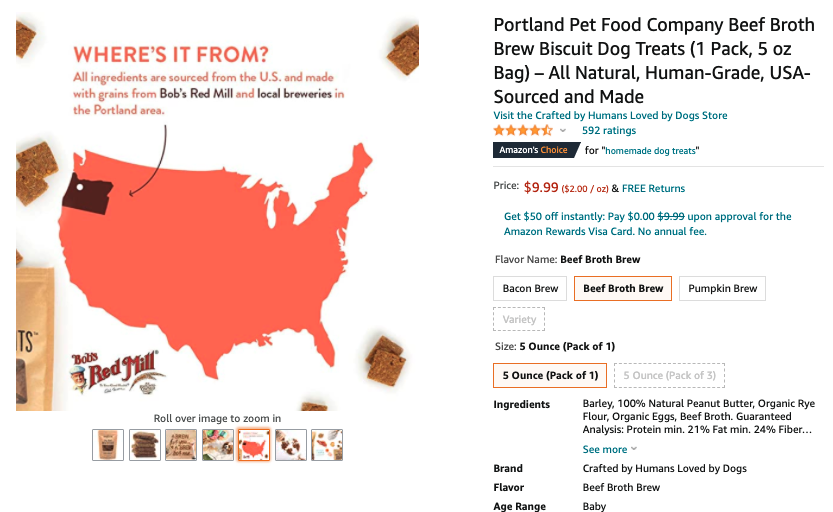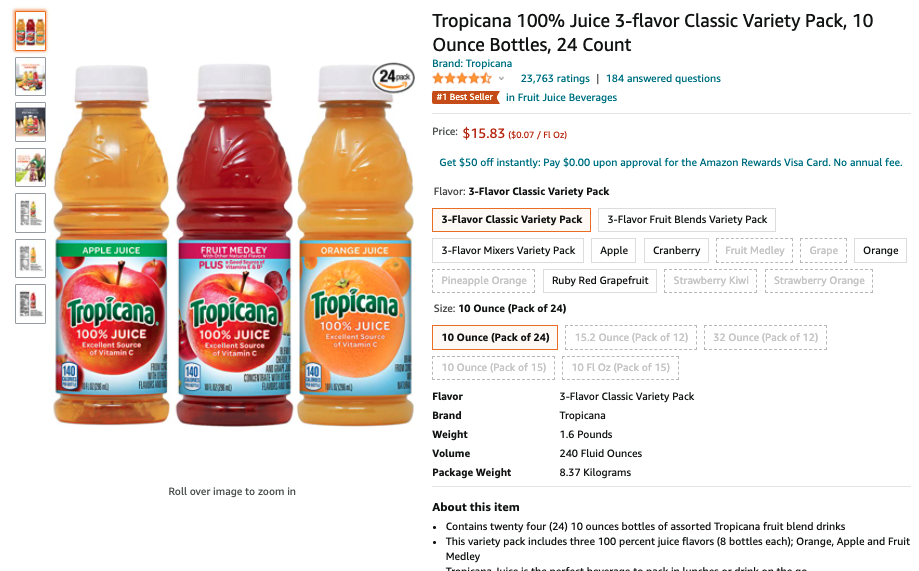
If you’re considering affiliate marketing to accelerate your products on Amazon it pays to be prepared. Only best-in-class products that can scale to the wide audience offered by editorial recommendations should be put forward for this type of initiative. Your first step in effective Amazon marketing should always be comprehensive listing optimization. A strategic approach can increase your organic traffic before you even start paying for Amazon Ads or third-party services such as Seller Rocket.
At eCommerce Nurse, a full-service agency specializing in Amazon, we manage accounts for sellers and vendors across the spectrum, in every Amazon locale. From SMBs to large, multinational corporations, we’ve found many businesses simply aren’t nailing the basics. Here are six key steps you should implement before launching affiliate marketing, such as Amazon editorial recommendations with Seller Rocket.
What is listing optimization?
At a minimum, Seller Rocket recommends some basics before you shine a spotlight on your products with editorial recommendations. However, Amazon gives sellers a lot of freedom to edit their pages and brand presence on Amazon, beyond requiring you to have an image or title. When done correctly, listing optimization and a stellar brand presence can organically increase your traffic, help cross-sell products across your brand or range, prepare your listings for paid search placements and off-Amazon marketing, and beat the competition.
1. Fully optimize your listings on Amazon
This should be obvious, but sellers will want to invest in fully optimized listings immediately when they list a product for sale on Amazon.
Using a keyword, SEO-based approach, businesses need to create compelling text for titles, feature bullets, product descriptions, and backend keywords. Each component will need to be within Amazon guidelines to avoid suspensions or other issues. Ensure you check the guidelines for your specific category because categories ranging from beauty to CE can have very different requirements. For instance, titles are 200 characters and product descriptions are 2,000 characters max, but this may vary by category type. Product titles are especially important because they are one of the first things customers see in search and browse. Use proper capitalization, don’t use special characters (such as © or ™), and don’t include marketing messaging, like “hot item” or “best seller.”
We often tell prospective clients to avoid these common errors on product detail pages and to follow these guidelines for retail readiness.
Finally, consider that many customers shop on mobile devices. This displays your product pages much differently than a desktop device. You’ll want to consider this (or get expert help) and optimize your products with this in mind. For example, mobile displays will cut an Amazon product title to around 80 characters — far shorter than the limit of 200 characters noted in Seller Central. This will affect where you put your product’s crucial information in titles.
2. Don’t skip optimizing your product images
Main product images have strict requirements on Amazon. They must show the product on a plain, white background. The product must fill 80% of the space and there are even guidelines on where and how shadows can be shown. The main product image appears in search results and will be used for marketing purposes (for example, in editorial recommendations). Make sure you follow your category guidelines and have a professional and perfect main image.

Example of optimized product images from a brand eCommerce Nurse works with. Image 5 is featured.
But product image guidelines for secondary images (images 2 through 9) are much less strict. You can (and should) optimize these images to include unique selling points, lifestyle imagery, how-to instructions, and more.
Don’t forget video options! If you are a US seller, you can add a video in place of a product image. This is a great opportunity to further sell your product’s USPs to your customers.
3. Ensure you’re utilizing all marketing offerings from the Amazon Brand Registry
If you are a manufacturer or brand owner, you’ll want to sign up for the Amazon Brand Registry. Not only does this program help with brand protection, but it offers marketing benefits you cannot afford to miss out on. These include:
All of these are free to use once you’re in the Brand Registry. However, you may need to dedicate resources (such as copywriting or design) to have them built to a better standard. A+ Content and Brand Stores perform much better if they are cohesive, SEO-based, and well-presented. eCommerce Nurse can also help with this step.
4. Check your product variations
Knowing how to maximize the variation relationship is crucial to your success on Amazon. What’s a variation? On Amazon, it’s a way of displaying related items by theme under one “parent.” The “children” will have various sizes, colors, flavors, etc.

Example of variations on Amazon.com. Are these juices set up to maximize the brand as a whole?
There’s no point in pouring resources into paid or affiliate placements if your variations are a mess because this will dilute any impact your efforts may have. It’s always best to have variations properly set up and managed on Amazon. This means placing items with true parent-child relationships under one ASIN.
This can be complicated if you have more than one variant category. For example, a brand selling socks may have different colors, styles, and pack sizes. This requires a business to think carefully about how to maximize variation relationships. You’ll want to lump them in a way that makes sense to the customer and also ensures your products with more customer reviews and high ratings are on the same ASIN, and thus, the same detail page.
5. Do your homework: Pricing and inventory management
Brands should make sure they have done their research and are priced correctly and in stock. Pricing is going to depend on the product, category, and of course, your profit margin. Stock levels and inventory are intrinsically linked to your pricing strategy. Both are going to require consistent attention and a wide knowledge of the category and competition. When thinking about paid marketing placements, such as editorial recommendations, you should consider pricing a product highly enough that you can run a discount at all times. This requires planning enough stock levels to support this.
A coupon is often a good idea and will show a lovely dollar-off or percentage-off discount in search results. This will also appear in both ads and editorial recommendations placements, giving you an edge over the competition.
When it comes to other reductions, be sure to prepare adequately for sale periods such as Q4 and Prime Day. Take advantage of Prime Exclusive Discounts when available, too. Pairing this type of marketing initiative, ads, and an editorial recommendation can be very effective.
6. Drive traffic to your listings through Amazon Advertising
Once your products are in great shape and retail-ready, it’s prime time to start driving traffic to them. Amazon offers several advertising types to leverage your optimized pages, including Sponsored Products, Sponsored Brands (the ideal method for driving traffic to your new Brand Store), and Display Ads (for on and off-Amazon placements).
Advertising also gives you a good way to zero in on what keywords are working for your product and further optimize your listings from your learnings.
Making the most of your Amazon journey
Utilizing Seller Rocket for editorial recommendations can be hugely beneficial in terms of driving traffic, increasing awareness and conversion, boosting sales rank, and gaining a competitive advantage. But before you sign up, it’s important to make sure your listings and brand presence are fully optimized for success. This means basic listing optimization and going above and beyond for your key products. Have a large catalog? Consider investing resources in the top 10% of your listings.
If you cannot manage all the moving pieces of a well-optimized brand presence yourself, be sure to enlist the help of an experienced and expert agency, such as eCommerce Nurse. Our range of services offers account management or a comprehensive marketing strategy to take your editorial recommendations and Amazon business as a whole to the next level.

Katy Luxem is the eCommerce Content Manager at eCommerce Nurse. You can find her via her Linkedin.
© 2024 SellerRocket TM . All Rights Reserved.
Get our latest updates directly to your inbox.
Only the best in eCommerce and affiliate news, tips and tricks.
